
Geert Lovink asked me to write a short piece on Marina Vishmidt. My memories and thoughts can be found here.

Geert Lovink asked me to write a short piece on Marina Vishmidt. My memories and thoughts can be found here.
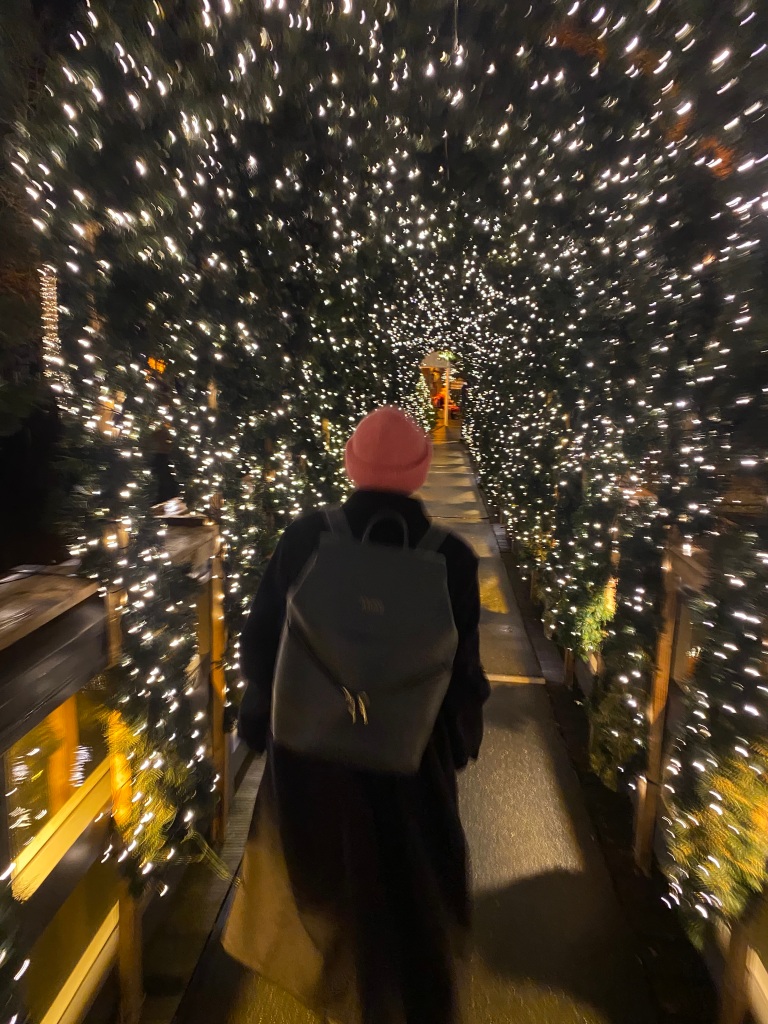
It’s hard to comprehend, and even more difficult to accept, that we will have to make do without Marina Vishmidt’s gleeful intelligence and puckish sweetness. This moment was expected, but that does not make it any easier to process.
Unable to gather my thoughts, I’m posting a picture of Marina under the heaventree of stars (e.g. some Christmas lights) in Lüneburg, November 2023.
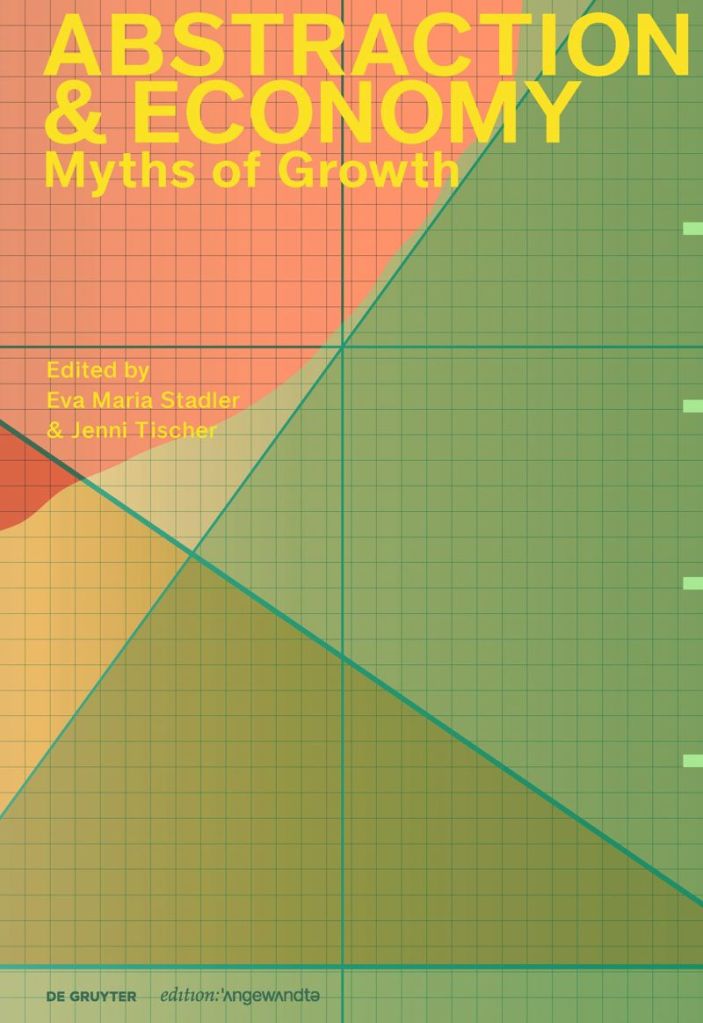
Another upcoming Viennese volume, which is being readied for print as we speak, is Eva Maria Stadler and Jenni Tischer’s Abstraction & Economy: Myths of Growth, which comes out of an online lecture series and a symposium organized by Eva Maria and Jenni at the Angewandte (for which Falke Pisano made poster designs). In some ways, this could be seen as a sequel to Gean Moreno’s In the Mind but Not from There: Real Abstraction and Contemporary Art—and indeed my own contribution is a tweaked and updated version of my essay in that volume, “Concrete Abstraction—Our Common World.”

Meanwhile, I will try to make time (easier said than organized) for my ongoing work on abstraction. I have cancelled an upcoming lecture in Berlin because I really do not see how I could speak in Germany right now, but I will try to use talks and articles to continue developing what should at some point become the second volume of Forms of Abstraction. In addition to Jaleh Mansoor’s review of the first volume (Objections) in De Witte Raaf (in Dutch), I was happy to see a brief but illuminating discussion by Tobias Dias in a Danish-language article on Georges Didi-Huberman and form. With the collapse (intellectually and politically, and sometimes organizationally or financially) of so many magazines and journals, this is already quite something!
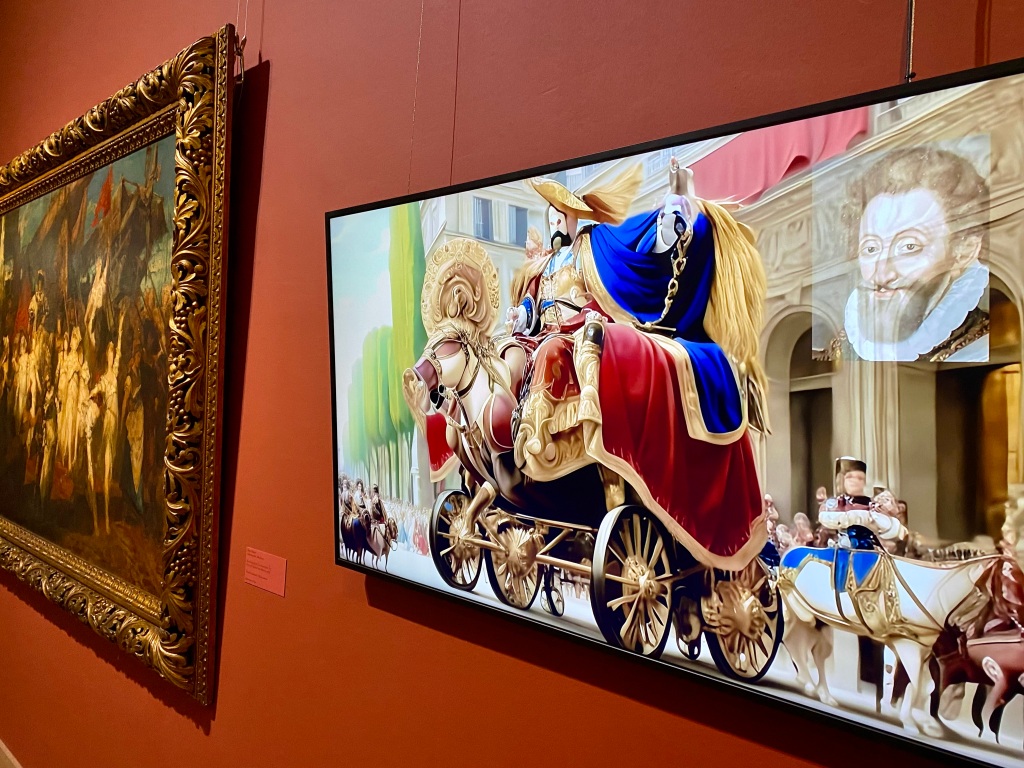
Sabine Folie’s exhibition History Tales: Fact and Fiction in History Painting is on view at the Akademie der bildenden Künste in Vienna till May 26. The exhibition places works by contemporary artists and a variety of loans in a critical dialogue with paintings, prints, plaster casts and various documents from the academy’s collection. Alexander Kluge contributed a number of his recent short films produced with the AI image generator Stable Diffusion. For the catalogue, which is currently in production and will be presented on March 7, I wrote a short text on these pieces titled “Alexander Kluge: Alternate Histories, Potential Images.”
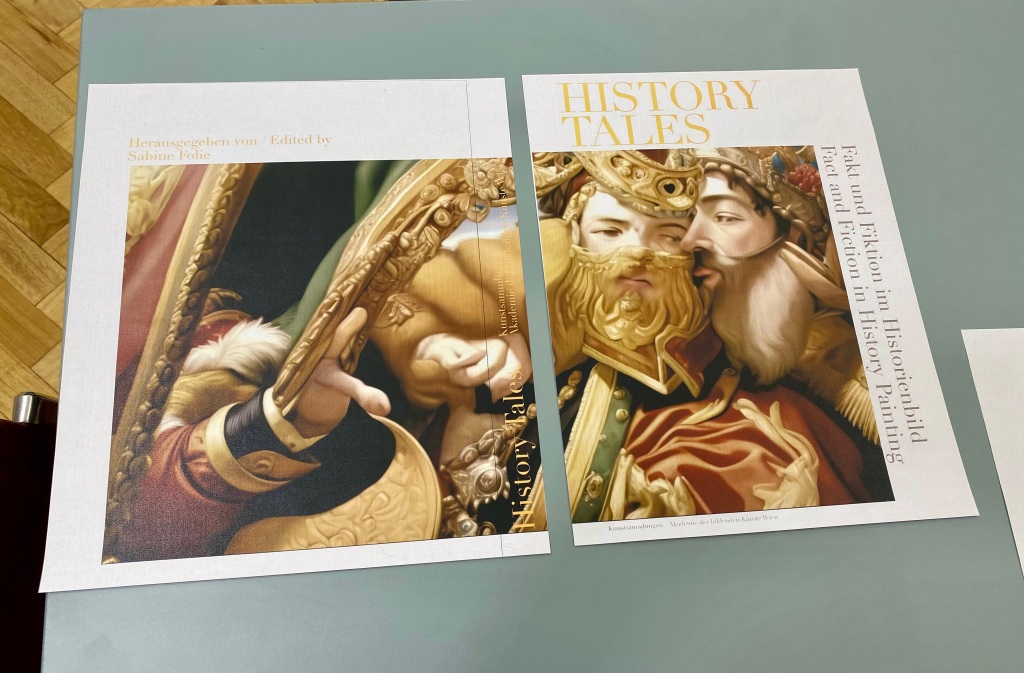

Images: An Installation view with Kluge’s film Digitale Kommentare zu dem Bild Triumphaler Einzug von Henri IV in Paris von Peter Paul Rubens, a version of the catalogue cover design with a still from Kluge’s film, and the final catalogue.

My book Objections is slowly finding its way in the world… Recently, a substantial and thoughtful review by Jaleh Mansoor was published in De Witte Raaf—in a Dutch translation by Christophe Van Gerrewey, but in case Dutch is all Greek to you, you could always get some helpful AI entity to (re)translate it for you.
Belatedly, I’m doing a couple of book launches in the coming months: on November 10 (19:30) at pro qm in Berlin, and on December 7 (18:00) at the Rijksakademie in Amsterdam. As ever, I try to make these events dia- rather than monological. I will be in conversation with Marina Vishmidt at pro qm; participant(s) the the Rijks will be announced soon.
In light of the Stanley Brouwn cottage industry that has sprung up in the US, I thought I’d post a scan of my 2018 review of two modest Dutch Brouwn exhibitions, which is buried in an old issue of Texte zur Kunst. Apart from an annoying autocorrect mishap/editorial oversight that turned a French Enlightenment philosopher into an airplane (Concordet became Concorde), I’m still quite happy with this short reflection on Brouwn’s practice—and on the challenges it poses for the critic or art historian.
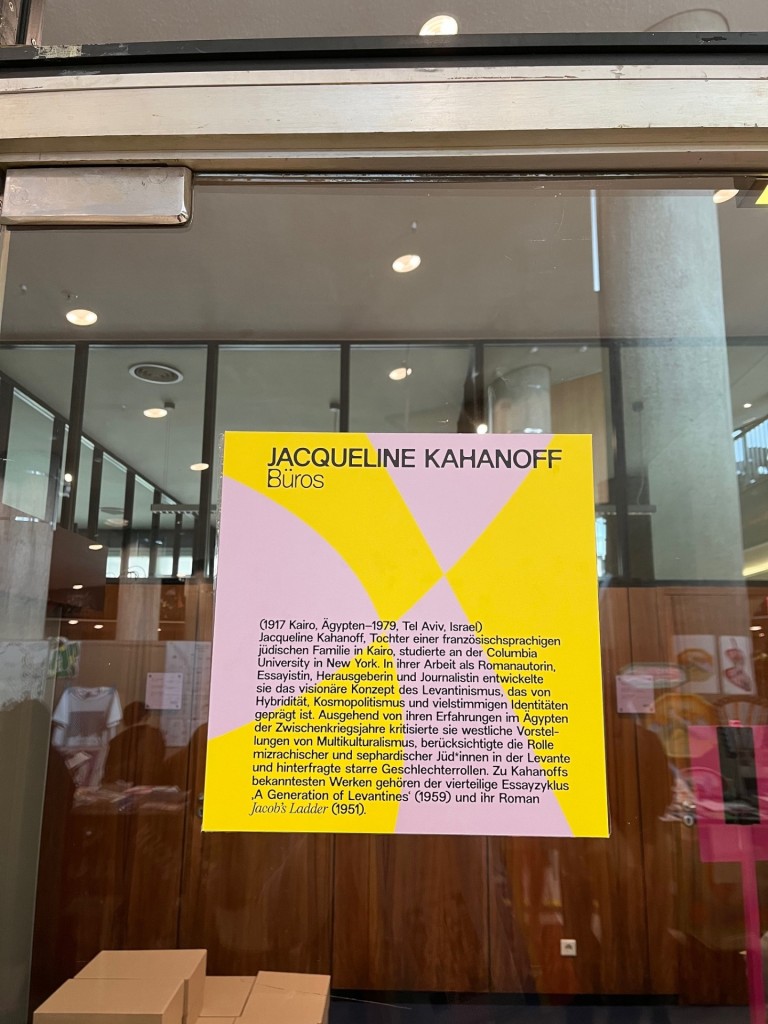
At the Miss Read book fair at the Haus der Kulturen der Welt in Berlin, from September 22-24, BAK distributed a printed brochure with Eva Meyer and Eran Schaerf’s essay on Jacqueline Kahanoff’s notion of Levantinism, which I commissioned for my “ExitStateCraft” series on BAK’s prospections platform. The text is here.
It’s funny that the text was thus circulated in the HKW; in 2020, Eran, Eva and I proposed a project on Levantinism to the then-curator of the HKW, but we never heard back. Now it turns out there’s an office space dedicated to Kahanoff at the institution—which is something, I suppose.
Under the dismal circumstances of the present, it is as crucial as ever to sound out the anachronistic potential of Kahanoff’s Levantinism. As Alexander Kluge once put it: “The potential and the historical roots and the detours of possibilities also belong to reality. The realistic result, the actual result, is only an abstraction that has murdered all other possibilities for the moment. But these possibilities will recur.”

The second part of my essay “Capitalism and Schismogenesis” is in the October issue of e-flux journal. In a way, the splitting of this article into two installments strengthens the pun in the title; after all, Capitalism and Schizophrenia consists of two volumes. Nonetheless, the article was not written as a two-parter, and should be considered one text. While I may be slightly ambivalent about breaking up, on the whole I couldn’t be happier with the care taken by the editors in making this long-gestating piece public.

E-flux journal no. 138 (September 2023) is out, with the first part of my essay “Capitalism and Schismogenesis.” This wasn’t designed to be a two-parter, but given the text’s length (true to form), the editors thought it wise to split it up. The piece is part of a book-in-progress titled States of Divergence.
The aforementioned publication on the occasion of Dora García’s exhibition at Antwerp’s M HKA (this is how they actually spell their name) has materialized. Inserts in Real Time. Dora García: Performance Work 2000-2023 is a catalogue of the artist’s performance pieces, accompanied by writings by García herself, a conversation with curator Joanna Zielińska, and essays by Bojana Cvecić and myself. I’ve largely stopped buying big monographic exhibition catalogues, and one does wonder who actually reads these things—but Inserts in Real Time is one of those carefully crafted and well-edited volumes that just about justify the existence of the entire genre.
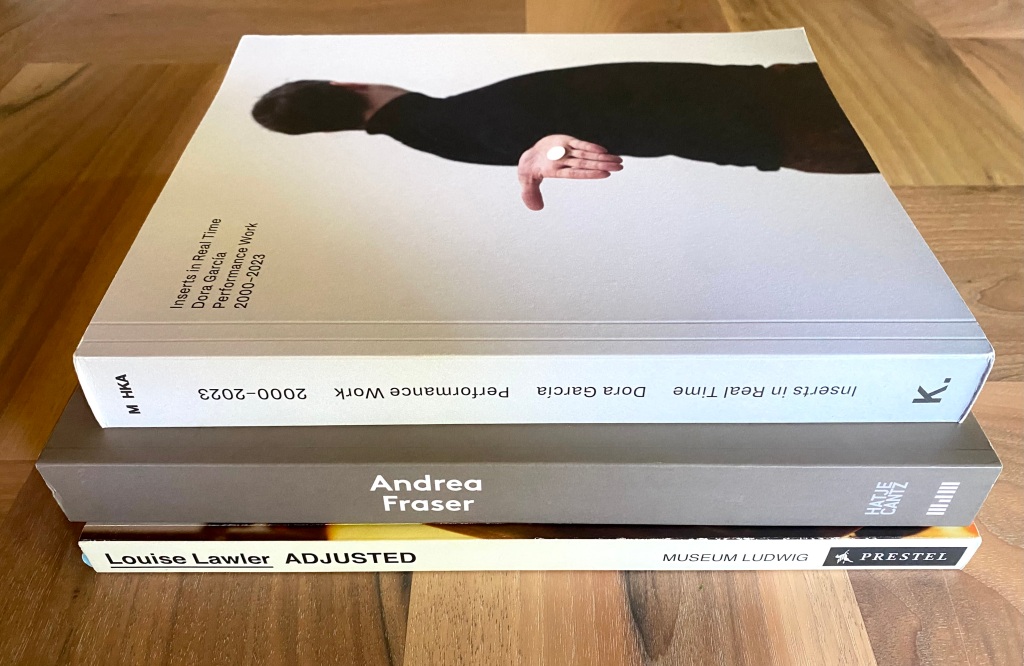
In retrospect, my text “Enacting Red Relations: On Dora García and Performance” seems like the completion of an unplanned trilogy of monographic essays that revolve around issues of performance, acting and enactment (in Andrea Fraser’s psychoanalytically informed terminology). The “series” started with “‘Not Stone’: Acting in and with Louise Lawler’s Pictures” (in the Museum Ludwig’s catalogue Louise Lawler: Adjusted, 2013) and continued with “Andrea Fraser: Institutional Analysis’ (in the catalogue of Fraser’s 2015 exhibition at the Museum der Moderne in Salzburg). Those earlier text can be found on this site’s articles page—which I really should update one of these days.
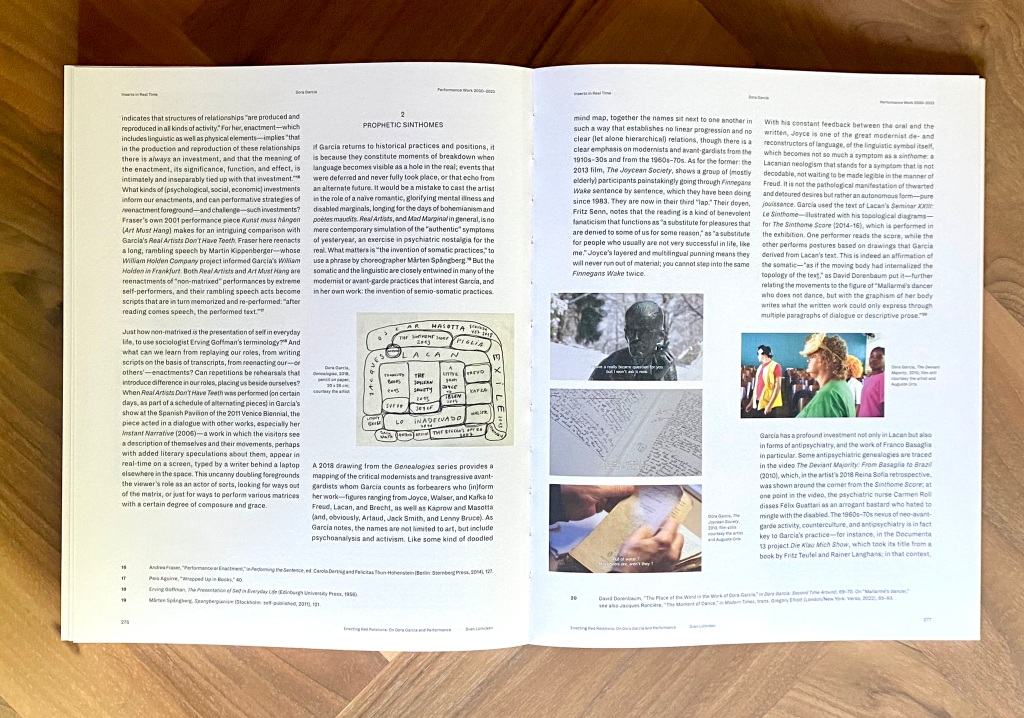
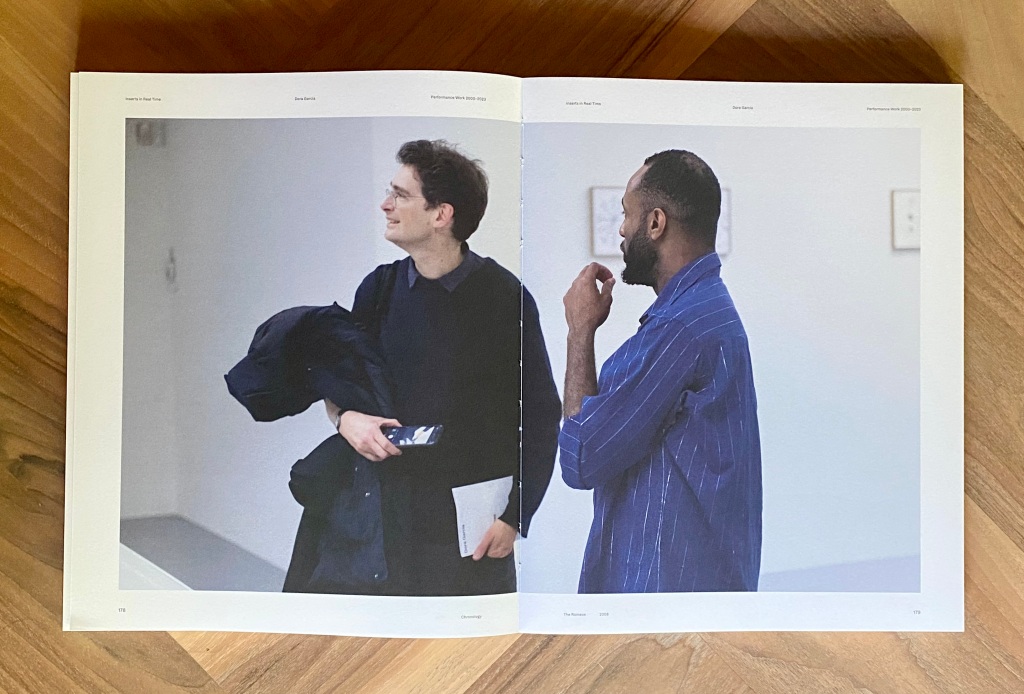
(Very funny, Dora and Sophie!)
You must be logged in to post a comment.